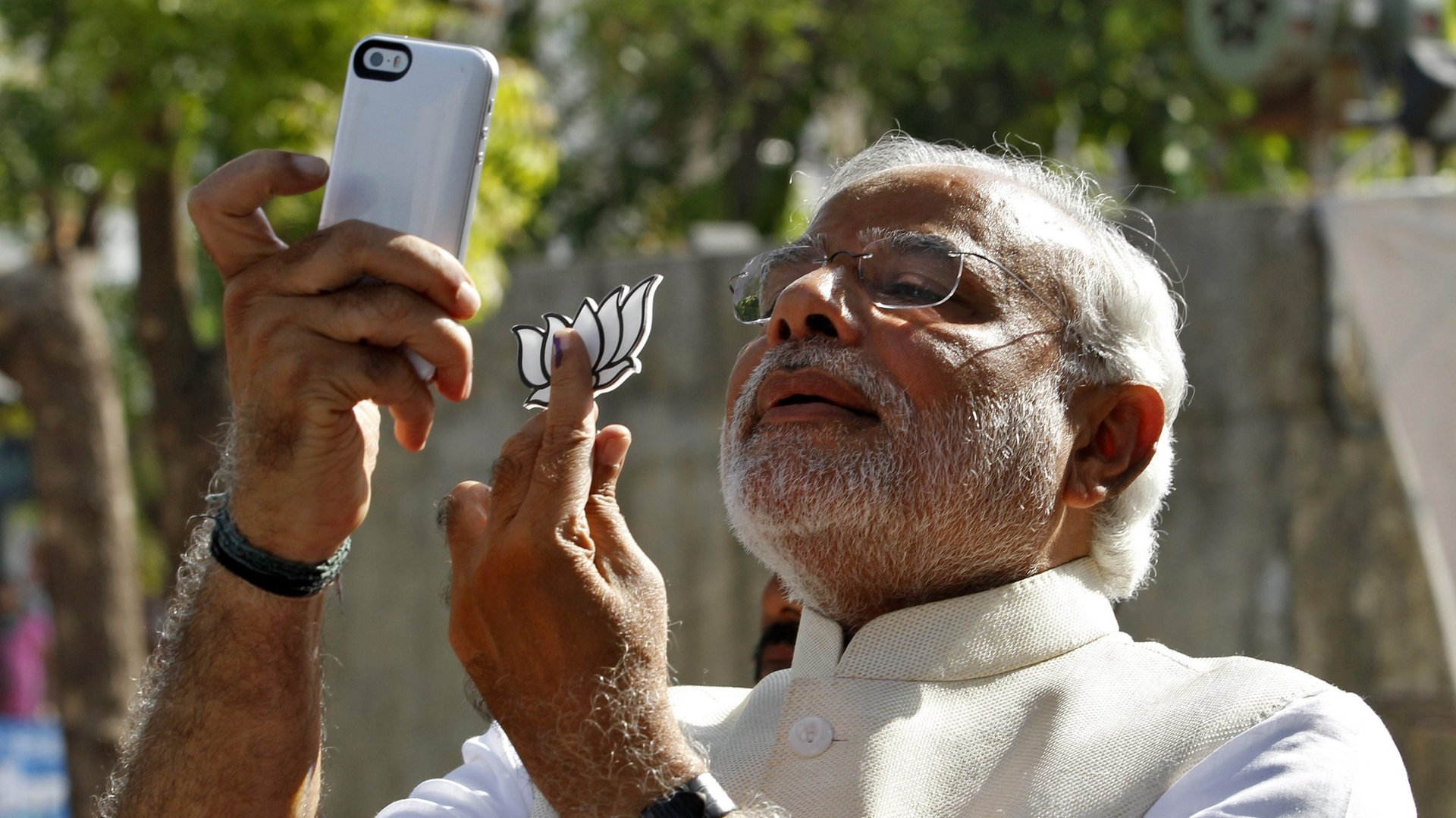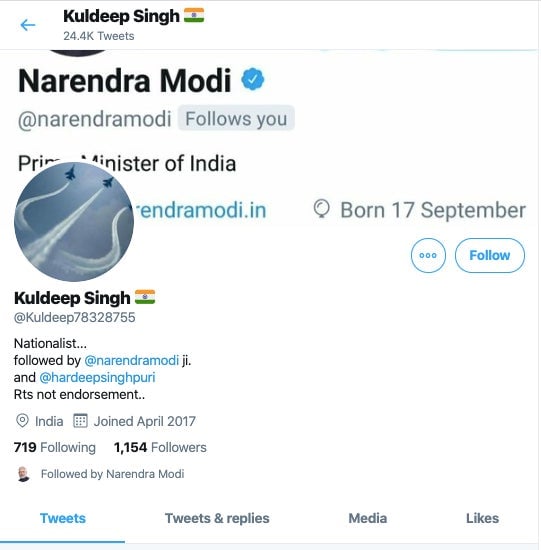Modi can’t do without social media and social media can’t do without Modi
Roughly seven years ago, Baby Boomer Indian politicians were still trying to understand how Twitter worked. Today, such is his clout on Indian social media that a mere suggestion of deleting his accounts has left internet users stunned.


Roughly seven years ago, Baby Boomer Indian politicians were still trying to understand how Twitter worked. Today, such is his clout on Indian social media that a mere suggestion of deleting his accounts has left internet users stunned.
Nobody knows for sure yet if Indian prime minister Narendra Modi will indeed quit his Twitter, Facebook, YouTube, and Instagram accounts as he hinted last night (March 2), but if he does, that would mark the end of a remarkable journey.
While campaigning for his first term as prime minister during the Lok Sabha elections of 2014, Narendra Modi used social media so deftly he forced other politicians and political parties to adopt various platforms to engage with Indians. Since then, he has gone from strength to strength, joining the league of some of the most popular men and women in the world in terms of number of followers.
Hence, for a man with millions of followers on Twitter alone, it would seem like harakiri to be leaving social media for good.
“It makes little sense that Modi would want to go off social media, given how much it has helped elevate him politically and enhanced his profile and brand over the years,” Michael Kugelman, deputy director and senior associate for South Asia, Wilson Centre, told Quartz. “He has used it to connect with Indian audiences in ways that enabled him to appeal to young voters in elections…More broadly, Modi used social media and especially Twitter to reach and impact global audiences well before (US president) Donald Trump’s tweetstorms came along.”
Sceptics, though, feel the Indian prime minister’s tantalising tweet yesterday was a gimmick.
Yet, imagine if he did quit.
Modi without social media
The Indian prime minister holds no press conferences. Neither does he take questions in any open fora with the media.
In this scenario, he has only two channels to engage with his electorate: his social media accounts, or Mann Ki Baat, his monthly All India Radio address. During historic events, such as when his Bharatiya Janata Party (BJP) government rendered Article 370 toothless in August last year, or when India demonetised high-value currency notes in November 2016, he addressed the nation through a television broadcast.
By far, Modi’s steadiest engagement with Indians has been through Twitter, YouTube, Facebook, and Instagram. Whether festival greetings, condolences, or expressing other views, Modi has used social media to connect with Indians the world over.
“It’s almost like his use of social media is meant to compensate for his refusal to do press conferences. With social media, thanks to the power of distance, he has much more control over how he communicates to his audience,” Kugelman said.
To quit social media could imply giving up that control, potentially affecting Modi’s brand and his politics.
Social media without Modi
Modi has over 53 million followers on Twitter, while he follows only 2,372. Most of the latter are his own ministers, besides world leaders like Brazilian president Jair M Bolsonaro and Indian sportspeople. And then there are a few who don’t seem to fit any description of celebrity.
These are ordinary citizens, who mostly retweet BJP’s and Modi’s tweets. For them, being followed by Modi is a badge of honour, more important than any “blue tick” or verified tag. Some are “proud” and others are downright “blessed” to be followed by their prime minister.

An Indian social media universe inhabited by Modi is also one where right-wing trolls operate. Most of these have the simple job of amplifying pro-government and right-wing voices and undercutting dissent.
Social media then becomes a stage for Modi’s supporters to showcase their allegiance and loyalty—even leading up to election candidacy sometimes.
Tajinder Pal Singh Bagga, a BJP spokesperson and candidate in the recently concluded Delhi elections, is a potential case study. Such was his strong and favourable performance on social media that, in 2015, he was among the #Super150 social media influencers invited to the prime minister’s residence.
For a leader who has created this universe and benefited from it, it would be rather counterintuitive to be quitting it for good. And, this announcement, set in the backdrop of the recent riots in Delhi, would perhaps only further his image as an aloof leader.
“India is experiencing increasing amounts of social tension and political volatility, and he has maintained a silence that makes him seem disconnected and disinterested. If Modi pulled the plug on his social media accounts, this would play right into this perception of a leader unwilling to engage or conciliate amid all the tumult around him,” Kugelman observed.
But it could eventually be a mountain of a molehill.